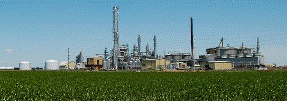Agricultural and Biological Systems Engineering, Department of

Adam Liska Papers
Document Type
Article
Date of this Version
2017
Citation
Indo-US Workshop on Addressing the Nexus of Food, Energy, and Water April 19-21, 2017, Indian Institute of Science, Bangalore, India
Abstract
Soil organic carbon (SOC) levels are the balance of carbon inputs from plant material and loss from oxidation to CO2 (SOC = IC - kCoc) SOC tends to decrease as atmospheric temperature increases.
In the US, SOC levels are highest in the north central region (Iowa) where maize & soybean are grown at high yields.
In the US, gross energy yield of biofuel production can be increased by using both maize grain & maize residue.
Are the US results relevant for India if crop residues are used for biofuels?
India’s estimated biomass production & potential in 2014 (Indian government supported study)
Other impacts of increased residue use are perhaps more important issues than C-intensity of biofuels
Increased residue removal would probably have major negative impacts on agricultural productivity:
1) Soil erosion increase (water & wind) = lower crop yields
2) Soil moisture decrease = lower crop yields
3) SOC decrease = nutrient decreases = lower crop yields
R. Lal (2004): “The close link between soil C sequestration and world food security on the one hand and climate change on the other can neither be overemphasized nor ignored.”


Comments
Copyright 2017 Adam Liska